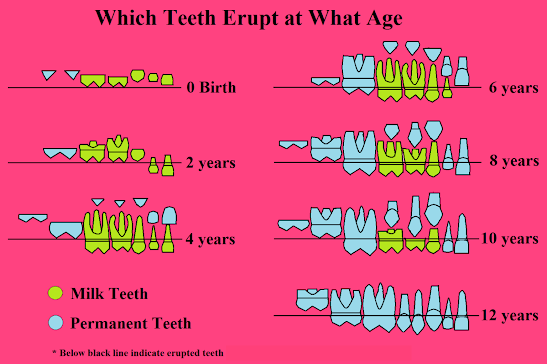Interdental Brushes: Are They Right for You?
Introduction
What is an Interdental Brush?
Interdental brushes are very small ‘bottle-brushes’ that look like Christmas trees, designed to clean the spaces between teeth where regular toothbrushes and dental floss may not be able to clean properly in certain situations. Interdental brushes come in various sizes and shapes to fit different gaps between teeth and dental appliances. They can effectively remove food particles, plaque, and other debris from areas between the teeth, which can help reduce the risk of gum disease and tooth decay.
Why Use Interdental Brushes?
Interdental brushes are a recommended tool for individuals with larger gaps between their teeth, as well as those with gum disease or gum recession. Additionally, they can be useful for individuals with dental appliances like braces, bridges, or artificial teeth, where it may be challenging to thoroughly clean not just the interdental spaces but also all surfaces of the teeth.How to Use Interdental Brushes?
While toothbrushes and floss can be selected without guidance from a dentist, interdental brushes require professional consultation due to the need for multiple brushes of different sizes and the potential for causing damage if used improperly. Using interdental brushes incorrectly can lead to gum recession, gum damage, and tooth abrasion. Therefore, it is important to consult your dentist for the appropriately sized brushes for your teeth.
Using interdental brushes is relatively simple, but it may take some practice to get the hang of it. Here are the steps to follow:
- Choose the right size: Consult with your dentist to find right sizes for you. Begin with the smallest brush.
- Insert the brush: Gently insert the brush into the space between your teeth. Be careful not to force the brush, as this can damage your gums.
- Clean the space: Gently move the brush back and forth to clean the space between your teeth and to avoid damaging your gums. Repeat this motion a few times before moving on to the next space.
- Rinse and repeat: After you’ve cleaned all the spaces between your teeth, rinse your mouth with water and repeat the process once a day, especially before going to bed.
- Braces and bridges: Interdental brushes can effectively clean other surfaces of teeth that may not be reached by brushing and flossing, especially for individuals with braces or bridges.
- Replace regularly: Replace your interdental brush regularly, as the bristles can become worn over time.
Proper usage of interdental brushes should be learned under the guidance of a dental professional to ensure proper use and avoid potential harm.
Types of Interdental Brushes
Interdental brushes come in various types, each with its own advantages and disadvantages. Here are some of the most common types:
Straight brushes
Straight interdental brushes are the most common type. They are simple to use and can be used to clean most spaces between your teeth.
Angled brushes
Angled interdental brushes have a curved head that makes it easier to clean hard-to-reach spaces in the back of your mouth.
Tapered brushes
Tapered interdental brushes have bristles that taper towards the end, making them ideal for cleaning spaces that vary in size.
Cone-shaped brushes
Cone-shaped interdental brushes have a pointed tip that can be used to clean tight spaces and hard-to-reach areas.
Common Myths and Misconceptions: Are they True or False?
Can an interdental brush cause permanent bleeding?
Improper or excessive use of an interdental brush may cause permanent bleeding. Bleeding gums when starting to use an interdental brush is normal, indicating mild gum disease, but it’s temporary; consult a dentist if it continues.
Can an interdental brush damage your gums?
Improper or aggressive use of an interdental brush can damage your gums.
Can an interdental brush cause gaps or “black tringles” between your teeth?
Improper or excessive use of an interdental brush may cause gaps or “black triangles” between teeth. A “black triangle” between teeth is a gap at the gumline caused by gum recession and may be due to factors such as aging, gum disease, or brushing too hard.
Conclusion
Interdental brushes are a valuable tool for improving oral health in specific situations. Consult with your periodontist or dentist to determine if interdental brushes are suitable for your personal oral care needs. With the right guidance and proper usage, interdental brushes can help maintain a beautiful and healthy smile.
Frequently Asked Questions (FAQs)
Do interdental brushes replace regular brushing and flossing?
No, interdental brushes are not a replacement for regular brushing and flossing. They should be used in conjunction with regular brushing and flossing for optimal oral health.
Are interdental brushes better than flossing?
Both interdental brushes and flossing are effective ways to clean between your teeth, but interdental brushes may be easier to use for people with dexterity issues or braces.
How often should I use interdental brushes?
It’s recommended to use interdental brushes at least once a day, preferably before bedtime.
Can I reuse my interdental brush?
No, interdental brushes should be replaced regularly as the bristles can become worn over time and less effective at cleaning. Interdental brushes should be replaced when the bristles become worn or frayed, or every 1-3 weeks depending on frequency of use.
Can interdental brushes be used on sensitive teeth?
Yes, interdental brushes are safe to use on sensitive teeth, but it’s important to choose a brush that is appropriate for your teeth and use a gentle motion when cleaning.
Can children use interdental brushes?
Yes, children can use interdental brushes. The use of interdental brushes may be appropriate for children under certain circumstances, but it is important to seek guidance from a dentist, choose brushes that are age-appropriate, and supervise their use closely.





Comments
Post a Comment